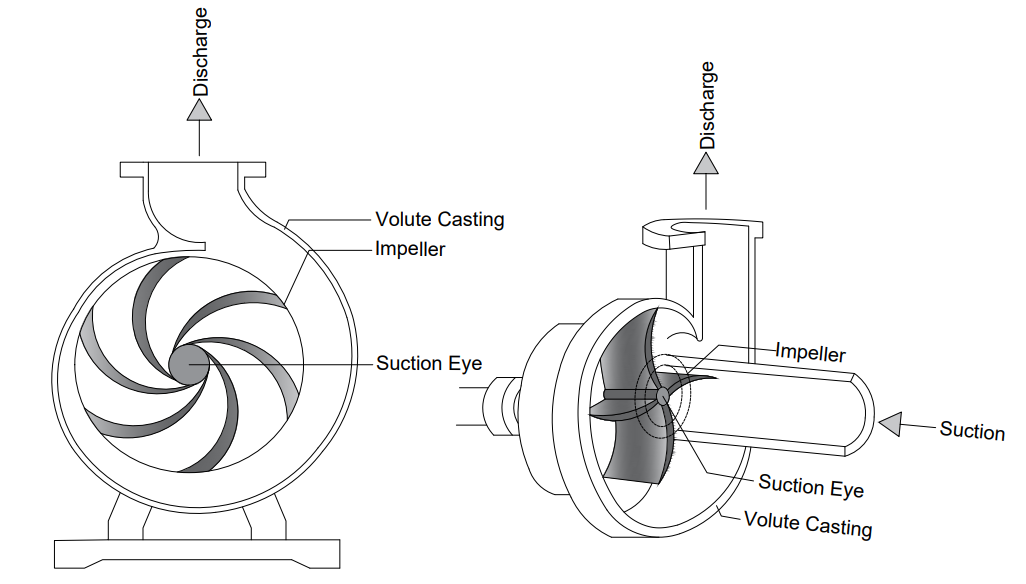- Last updated Dec 13, 2021
- Swimming Pool, Pumps
Pool Pump
Introduction
With the motor, the pump draws water from a pool or spa, forcing it through a filter and heater (if you have a heater), which returns it to the pool or spa. When they work together, a pool pump and a pool motor are two completely different devices. Although both are components of a pool's circulatory system, they are not interchangeable.
A pool or spa pump contains a housing, motor, impeller and a strainer basket. A motorized pump is a device that creates the movement of water. Pumps are commonly referred to as centrifugal pumps, which cause the pool water to move due to the principle of centrifugal force. Pool pumps are self-priming, i.e. when started, they expel all air from the system, creating a vacuum and initiating a suction. If you run a pump that has lost its prime, the motor will overheat and damage the pump.
Working principle
The impeller is the main component of a centrifugal pump. It contains a series of curved vans. These are usually between two disks. For fluids containing solids, an open or semi-open impeller is preferred.
The fluid enters the impeller on its axis ('eye') and exits around the vanes. The impeller, to the opposite side of eye is connected to a motor via a drive shaft and rotates at high speeds (usually 500-5000 rpm). The rotational motion of the impeller accelerates the fluid to the pump casing through the impeller vanes.

The pump casing has two basic designs: volute and diffuser. The purpose of both designs is to translate the fluid flow under pressure into a controlled discharge.
In a volt casing, the impeller is offset, effectively creating a curved funnel with an increasing cross-sectional area to the pump outlet. This design causes the fluid pressure to increase to the outlet.
Sizing of pool pump
When buying a new in-ground swimming pool pump, you need to determine what size pool pump you need. There is a tendency to buy a pump that is bigger than necessary because people think it is bigger. However, this will not only lead to higher operating costs, but will also overpowering your filter system. As a general rule, you should have a pump that filters all the water in a pool over an eight-hour period. This page will show you how to choose a pump that will filter all the water in your pool in eight hours.
Step 1
Your first step is to determine the size of your pool. The formulas for calculating volume depend on the shape of your pool.
For a rectangular pool:
Measure length, width, and average depth . The average depth is determined by adding the depth at the shallow end to the depth at the deep end and dividing by two.
The formula for calculating the total volume for a rectangular pool is: volume = length x width x average depth
For example: Your pool is 10 meters long and 5 meters wide. The shallow part of the pond is 1 meter and its depth is 2 meters. Therefore, the average depth of the pool is 1 + 2 = 3. Divides by 2. This gives you 1.5 m
The volume of the pool is 10 m x 5 m x 1.5 m = 75 m³
Step 2
Now that you have calculated the amount of water in your swimming pool, now you want to determine the flow rate per hour you need to pump to clean all the water in your pool within eight hours. To bring this flow rate, divide your calculated volume by eight.
The required flow rate for a rectangular swimming pool, for example, is 75 m³/8 hours or 9.375 m³/h
Step 3
After calculating your required flow rate, the next step is to find the average head of your pool pump. When water flows through the system piping between the pool and the pump, it is resistant to flow depending on factors such as the length of the piping, the number of bends (elbows), and the diameter of the piping. This resistance is called the "Feet of Head" or "Head". The higher the head, the lower the actual flow rate of your pool. Calculation of Head can be involved and is generally done during the initial installation of the pool. Most basic in-ground pools have a head of 10 to 15 meters. For this example we will assume 13 m.
Step 4
Now you have the information you need to choose the size of your pool pump. Go to the description page of the style of pump you want to buy. Many pump manufacturers will provide a chart on this description page showing the KW required for your specific flow rate and head.
For example, based on the data calculated above for a typical rectangular pool, we are looking for a pump that can handle 10 m³/h with a 13 m head.
If this sounds complicated, do not be concerned. Click here and enter your flow rate requirements and head, and we will properly size your centrifugal pump to meet your requirements
Comments (1)